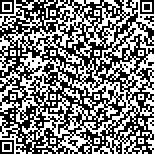| 引用本文: |
陈智,许洪明.臭氧蜂蜡栓治疗ⅢA型前列腺炎湿热瘀滞证的临床研究[J].湖南中医药大学学报,2021,41(6):924-927[点击复制] |
|
| |
|
|
| 本文已被:浏览 1813次 下载 488次 |
| 臭氧蜂蜡栓治疗ⅢA型前列腺炎湿热瘀滞证的临床研究 |
| 陈智,许洪明 |
| (重庆医药高等专科学校, 重庆 401331;湖南中医药大学附属垫江医院, 重庆 408300) |
| 摘要: |
| 目的 观察臭氧蜂蜡栓治疗ⅢA型前列腺炎湿热瘀滞证的临床疗效。方法 将130例ⅢA型前列腺炎湿热瘀滞证患者随机分为对照组及观察组,每组65例(观察组脱落1例),观察组予臭氧蜂蜡栓纳肛治疗,对照组予前列安栓纳肛治疗,每次1枚,1次/d,共治疗30 d。观察两组患者治疗前后的前列腺液中白细胞(expressed prostatic secretious-white blood cell,EPS-WBC)计数、中医证候评分、美国国立卫生研究院慢性前列腺炎症状指数量表(National Institutes of Health chronic prostatitis symptom index,NIH-CPSI)评分、中医证候疗效以及不良反应。结果 治疗后,两组EPS-WBC计数均较治疗前降低(P<0.05),观察组与对照组EPS-WBC计数分别为(12.56±3.28)个/HP和(18.32±4.14)个/HP,差异有统计学意义(P<0.05);两组中医证候评分均较治疗前降低(P<0.05),观察组与对照组中医证候评分分别为(12.25±1.35)分和(16.74±2.28)分,差异有统计学意义(P<0.05);两组治疗后NIH-CPSI总评分、疼痛或不适评分、生活质量评分较治疗前降低(P<0.05),观察组与对照组NIH-CPSI的总评分分别为(11.78±1.65)分和(15.14±3.36)分,差异有统计学意义(P<0.05)。结论 臭氧蜂蜡栓治疗湿热瘀滞型ⅢA型前列腺炎疗效优于前列安栓纳肛治疗,安全有效,值得临床推广应用。 |
| 关键词: ⅢA型前列腺炎 臭氧 蜂蜡 臭氧蜂蜡栓 前列安栓 NIH-CPSI |
| DOI:10.3969/j.issn.1674-070X.2021.06.020 |
| 投稿时间:2020-05-15 |
| 基金项目:国家中医药管理局全国中医药创新骨干人才培训项目(国中医药人教函〔2019〕128号);垫江县科技计划项目(djkjxm2018jsyfysfyy041)。 |
|
| Clinical Study on Ozone Beeswax Suppository in the Treatment of Type ⅢA Prostatitis with Damp Heat Stasis Syndrome |
| CHEN Zhi,XU Hongming |
| (Chongqing Medical and Pharmaceutical College, Chongqing 401331, China;Dianjiang Hospital Affiliated to Hunan University of Chinese Medicine, Chongqing 408300, China) |
| Abstract: |
| Objective To observe the clinical efficacy of ozone beeswax suppository in the treatment of type Ⅲ A prostatitis with damp heat stasis syndrome. Methods 130 cases of type Ⅲ A prostatitis with damp heat stasis syndrome were randomly divided into control group and observation group, 65 cases in each group. The observation group was treated with ozone beeswax suppository anorectal treatment and the control group was treated with prostant anorectal treatment. One tablet each time, once a day, for 30 days. The expressed prostatic secretious-white blood cell (EPS-WBC), traditional Chinese medicine (TCM) syndrome score, the National Institutes of Health chronic prostatitis symptom index (NIH-CPSI), TCM syndrome efficacy and adverse reactions of the two groups were observed before and after treatment. Results After treatment, the EPS-WBC counts of the two groups were decreased compared with before treatment (P<0.05), the observation group and the control group were (12.56±3.28)/HP and (18.32±4.14)/HP respectively, the difference was statistically significant (P<0.05); the TCM syndrome scores of the two groups were decreased compared with before treatment (P<0.05), TCM syndrome scores of observation group and the control group were (12.25±1.35) and (16.74±2.28), the difference was statistically significant (P<0.05); after treatment, NIH-CPSI total score, pain or discomfort score and quality of life score of the two groups were lower than those before treatment (P<0.05), the NIH-CPSI total scores of the observation group and the control group were (11.78±1.65) and (15.14±3.36), the difference was statistically significant (P<0.05). Conclusion The efficacy of ozone beeswax suppository in the treating type Ⅲ A prostatitis with damp heat stasis syndrome is better than that of prostant anorectal treatment, which is safe and effective, and is worth clinical application. |
| Key words: type Ⅲ A prostatitis ozone beeswax ozone beeswax suppository prostant NIH-CPSI |
|

二维码(扫一下试试看!) |
|
|
|
|




